Wastewater is the effluent from industrial, agricultural and domestic activities, containing organic matter, nutrients and other pollutants. In order to protect the environment and water sources, wastewater must be treated, and wastewater biological treatment is an important method.
Principles of biological wastewater treatment
Biological wastewater treatment is a process that utilizes microbial activity to break down and remove organic matter and nutrients from wastewater. This treatment relies on the natural ability of microorganisms to convert pollutants into simpler and less harmful substances, thereby purifying wastewater and protecting the environment.
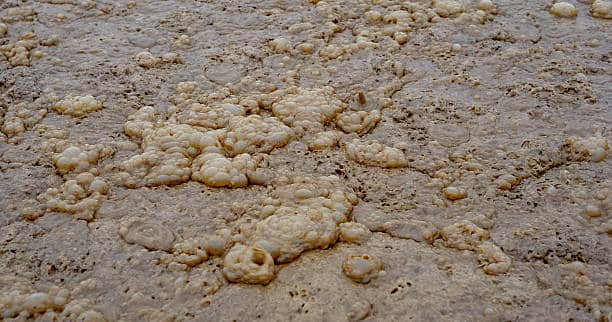
The biological wastewater treatment process typically consists of several key steps:
Biodegradation stage
This is the initial stage of biological treatment of wastewater. Organic matter in wastewater is broken down by microorganisms into water and carbon dioxide. Microorganisms, such as bacteria and fungi, utilize this organic matter as their source of energy and nutrients for growth. The carbon dioxide and water produced by this process are environmentally friendly products.
Biosorption stage
In this stage, microorganisms adsorb and transform nutrients in wastewater. For example, nitrogen and phosphorus, which are common nutrients in wastewater, are taken up by the microorganisms, thereby reducing the concentration of these nutrients in the wastewater. This helps to prevent over eutrophication of the water body after wastewater discharge and thus maintains the ecological balance of the water body.
Microbial growth and maintenance
Maintaining suitable conditions for microbial growth is important in the biological treatment of wastewater. Microorganisms require proper temperature, oxygen and nutrients to maintain their growth and activity. Monitoring and maintaining these conditions helps ensure the effectiveness of wastewater biological treatment.
The principle of biological treatment of wastewater lies in utilizing the biodegradation and nutrient adsorption abilities of microorganisms to convert organic matter and nutrients in wastewater into harmless products, thus purifying wastewater and reducing its negative impact on the environment. This environmentally friendly method is widely used in many industrial, agricultural and municipal wastewater treatment systems and plays an important role in maintaining water resources and ecological balance.

Aerobic biodegradation
Aerobic biodegradation is a wastewater biological treatment process in which microorganisms decompose organic material into carbon dioxide, water and microbial organisms in the presence of sufficient oxygen. This process requires that oxygen be supplied to the wastewater, e.g., through an aeration system(roots blower), in order to meet the oxygen demand for microbial metabolism.
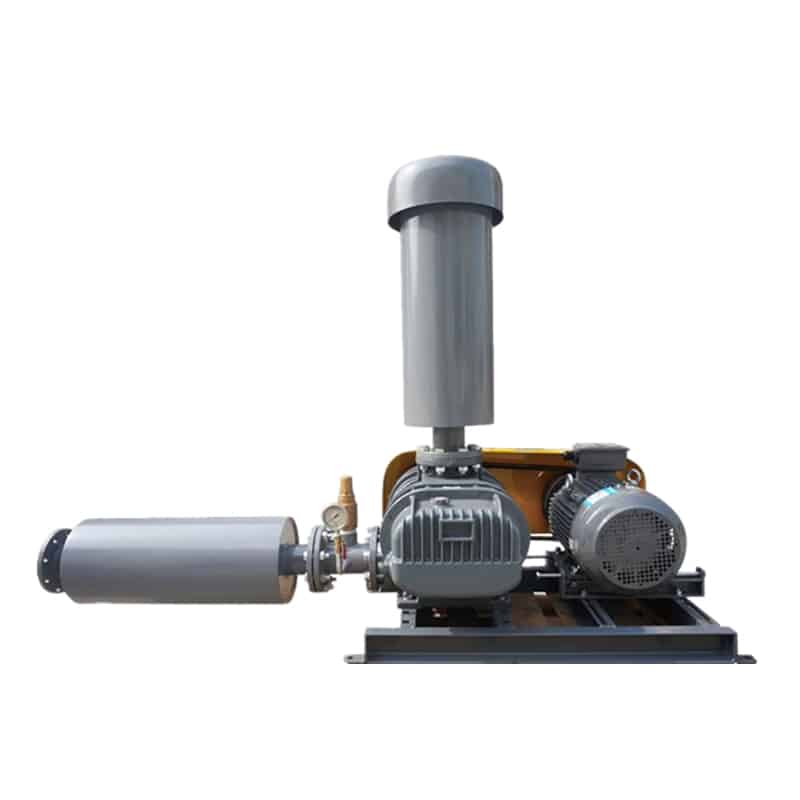
During aerobic biodegradation, the organic matter in the wastewater is utilized by microorganisms as an energy source while producing carbon dioxide and water. These microorganisms are usually spoilage bacteria, nitrifying bacteria, etc., which utilize the organic matter for growth and reproduction. Aerobic biodegradation effectively removes organic matter from wastewater, reduces the level of pollutants in the water body, and improves water quality.
The aerobic biodegradation process is usually carried out in a bioreactor, where the growth of microorganisms and the decomposition efficiency of organic matter can be optimized by controlling the conditions such as oxygen supply, temperature, and agitation. This process plays a key role in wastewater treatment, helping to reduce environmental pollution and maintain the ecological balance of water bodies.
Anaerobic biological treatment
Anaerobic biological treatment is a wastewater biological treatment process in which microorganisms decompose organic material under anoxic or low oxygen conditions to produce organic gases such as methane. Unlike aerobic biological treatment, anaerobic biological treatment does not require oxygen and is suitable for situations containing high concentrations of organic waste.
In anaerobic biological treatment, microorganisms degrade organic matter into methane through anaerobic metabolism (methane fermentation), and some products such as organic acids and hydrogen are also produced. This process helps to degrade organic substances into simpler compounds, thereby reducing the organic load and pollutants in the wastewater.
Anaerobic biological treatment is commonly applied to highly concentrated organic wastewater, settling tank sludge treatment, and in some special cases, such as leachate treatment from landfills. This approach can provide high wastewater treatment efficiencies in some cases, while also producing gases such as methane that can be used for energy recovery.
Activated sludge process
The activated sludge method is a commonly used biological wastewater treatment method for the degradation and removal of organic matter by mixing wastewater with activated sludge containing active microorganisms. This method is usually carried out under aerobic conditions and requires sufficient oxygen to maintain the metabolic activities of the microorganisms.
The basic principle of the activated sludge method is to mix wastewater with activated sludge that has been cultured, allowing the microorganisms to utilize the organic substances in the wastewater for growth, metabolism and decomposition. In this process, the microorganisms convert the organic matter in the wastewater into carbon dioxide, water and living organisms through adsorption, attachment and degradation. Subsequently, the wastewater and sludge are separated(Dissolved Air Flotation System) and the clean water is discharged, while the fraction containing sludge can be further treated(dewatering and drying) or returned to the reactor.
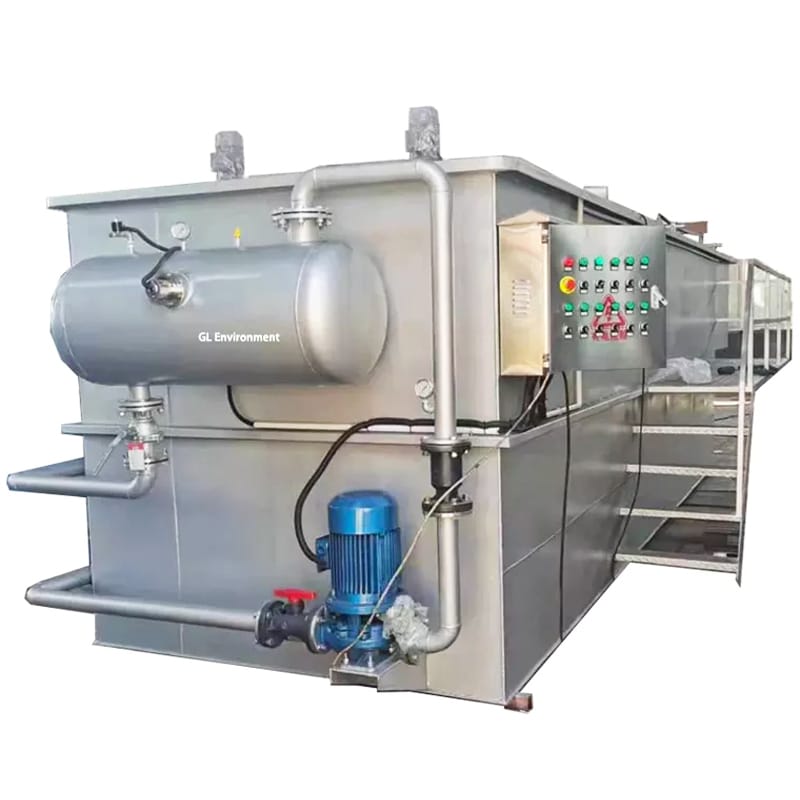
The activated sludge method has the advantage of being highly efficient and stable and is suitable for treating different types and concentrations of wastewater. The method allows for the control of conditions such as oxygen supply, temperature, and agitation in the reactor to promote the growth and metabolism of microorganisms. In addition, the activated sludge system enables the removal of nitrogen and phosphorus to achieve higher water quality standards.
What wastewater treatments require the use of biological treatment?
Municipal wastewater treatment plant
Municipal wastewater treatment plants usually utilize biological treatment processes, such as activated sludge and biofilm methods. These methods utilize microorganisms to convert organic matter in wastewater into carbon dioxide and water through degradation, and at the same time adsorb and remove nutrients, such as nitrogen and phosphorus, from wastewater, so as to purify wastewater into water that complies with discharge standards.
Biological treatment processes such as activated sludge and biofilm methods are widely used in municipal wastewater treatment plants. These processes require aeration equipment, bioreactors (e.g., activated sludge tanks, biofilm reactors), and conditioning equipment (e.g., pH-adjusting devices) to maintain microbial growth and reaction conditions.
Industrial wastewater treatment
Many industrial processes produce complex wastewater, such as the food, textile, and chemical industries. Biological treatment is commonly used in these fields as a pretreatment or primary treatment step to reduce the organic load in wastewater by converting organic matter into harmless products through the degrading ability of microorganisms.
In the industrial sector, different biological treatment processes are used, such as anaerobic treatment, biofilters, etc. This requires suitable bioreactors, aeration equipment, conditioning equipment (e.g., temperature control devices), monitoring equipment (e.g., oxygen concentration monitors), etc.
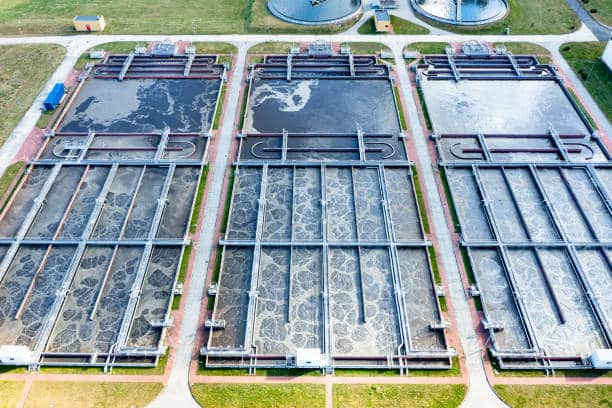
Agricultural wastewater treatment
Biological treatment is required for agricultural drainage and farm wastewater. Microorganisms can degrade pesticides, fertilizers and other chemicals produced by agricultural activities, while removing nutrients from wastewater to prevent eutrophication and pollution of water bodies.
Agricultural drainage and livestock wastewater are usually treated using processes such as wetland treatment and artificial wetlands. The required equipment includes wetland plants, biofilter media, filter layer materials, etc.
Food processing wastewater treatment
Wastewater from food processing contains organic matter, fats and proteins. Biological treatment can purify wastewater by degrading these organics into simpler compounds through the decomposition of microorganisms. Biological treatment requires suitable equipment such as bioreactors and biofilms.
Kitchen wastewater treatment
Kitchen wastewater contains a large amount of organic matter and oil and grease, which can be treated with biological treatment requiring bioreactors, aeration equipment, and so on. Biological treatment can utilize the decomposition of microorganisms to degrade these organics into carbon dioxide and water, thus purifying the wastewater.
Livestock and poultry farming wastewater treatment
Livestock farming wastewater is rich in organic matter and nutrients such as nitrogen and phosphorus. Biological treatment can remove these organics and nutrients through the degradation and adsorption of microorganisms to reduce the pollution of water bodies. Livestock and poultry breeding wastewater through biological treatment requires appropriate bioreactors, aeration equipment, sludge treatment equipment and so on.
Sewage reuse
The biologically treated wastewater can be further treated with advanced treatment, such as biofilter and ultraviolet disinfection, in order to achieve water reuse, such as agricultural irrigation, industrial water, etc., and reduce the demand for freshwater resources. Commonly used disinfection equipment are ozone generation system, sodium hypochlorite generation system.
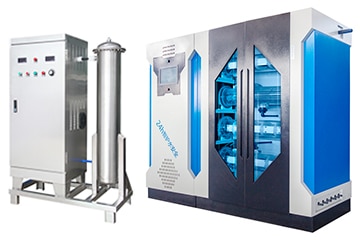
Advantages of biological wastewater treatment
- Efficient removal of organic pollutants: through the degradation ability of microorganisms, wastewater biological treatment can efficiently decompose the organic matter in wastewater into harmless products, reduce the organic load and realize the purification of wastewater.
- Strong adaptability: biological wastewater treatment is applicable to different types of wastewater, including municipal wastewater, industrial wastewater, agricultural wastewater, etc., and can be adapted to different water quality and pollutants.
- Low cost: Compared with some physical and chemical treatment methods, biological wastewater treatment is usually less expensive. The basic nutrients and energy sources required for microbial growth are widely available, and equipment maintenance and operation costs are relatively low.
- Environmentally friendly: Biological wastewater treatment produces relatively little waste residue, and the waste residue produced can be further treated or utilized, reducing the problem of waste discharge and disposal.
- Less chemical use: Biological wastewater treatment does not require the use of large quantities of chemicals, thus reducing the risk of chemical pollution of the environment.
- Sustainability: Biological wastewater treatment is a natural degradation process. By maintaining appropriate environmental conditions, microorganisms are able to continuously degrade pollutants and achieve long-term wastewater purification.
- Reduced Energy Consumption: Although some biological treatment systems require aeration equipment to provide oxygen, biological wastewater treatment consumes less energy than other energy-intensive methods.
- Reuse potential: Through further advanced treatment, biologically treated wastewater can be used for agricultural irrigation, industrial water, etc., to achieve resource reuse.
- Applicable to complex wastewater: biological treatment of wastewater in the treatment of complex wastewater, such as industrial wastewater and livestock and poultry breeding wastewater, has a strong adaptability and treatment capacity.

The role of biological wastewater treatment in environmental protection
- Water purification: Wastewater biological treatment purifies water and improves water quality standards by converting organic matter, nitrogen, phosphorus, and other pollutants in wastewater into harmless products through the degrading ability of microorganisms.
- Preventing eutrophication: Nutrients in wastewater such as nitrogen and phosphorus can contribute to eutrophication of water bodies, triggering problems such as algae outbreaks. Biological wastewater treatment removes these nutrients and prevents eutrophication.
- Protect water ecosystems: Biological wastewater treatment reduces the discharge of toxic and hazardous substances from wastewater, helping to protect the health and balance of water ecosystems.
- Reducing water pollution: Through wastewater biological treatment, wastewater pollutants discharged into natural water bodies are reduced, which helps to reduce the pollution level of water bodies and maintain the ecological environment of water bodies.
- Reduce groundwater contamination: Biologically treated wastewater typically contains fewer organics and pollutants, reducing the risk of groundwater contamination.
- Promote resource reuse: After appropriate biological treatment and advanced treatment, wastewater can be purified with certain water quality requirements, and can be reused for farmland irrigation, industrial water, etc., reducing the demand for freshwater resources.
- Reduce ecological damage: biological treatment of wastewater can reduce the damage to water ecosystems caused by industrial, agricultural and urban discharges and maintain ecological balance.
- Compliance with regulations and standards: Biological wastewater treatment can make wastewater discharge comply with environmental regulations and standards and avoid environmental pollution problems.
Summary
Wastewater biological treatment is an environmental protection technology that utilizes the biodegradation ability of microorganisms to convert organic matter, nitrogen, phosphorus and other pollutants in wastewater into harmless products to achieve the goal of water purification and ecological balance.
KUOSI, as a leading water treatment manufacturer in China with more than 16 years of rich experience in the field of wastewater treatment, offers sludge dewatering equipment, sludge dryers, dissolved air flotation systems, wastewater screens, aeration blowers, dosing systems, disinfection systems and grit removal equipment. Feel free to contact us.
